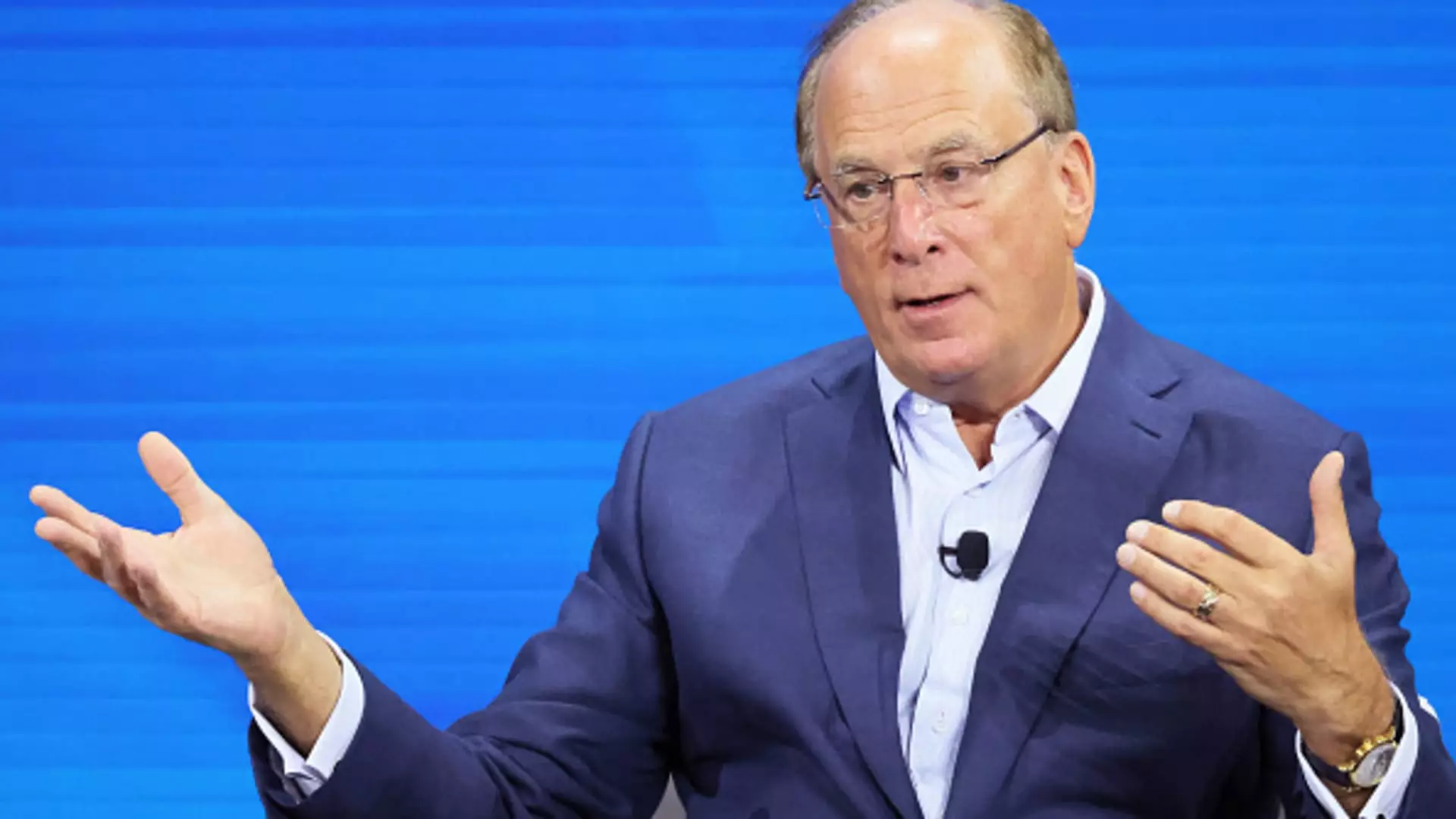BlackRock, recognized as the world’s largest asset manager, has recently attracted considerable attention following its exceptionally strong third-quarter earnings report. The firm, renowned for its innovative investment strategies, reported record-high assets under management (AUM), reaching an astonishing $11.5 trillion. This milestone can be attributed to a surge in investor inflows, driven by a bullish stock market environment, which contrasts starkly with the challenges that many financial institutions face in a complex economic landscape.
As a significant player in the financial sector, BlackRock’s impressive organic growth of $2 trillion over the last five years alone highlights its ability to attract capital and maintain investor trust. CEO Larry Fink emphasized the importance of this achievement during a recent CNBC interview, pointing out that this amount positions BlackRock alongside the sixth-largest asset managers globally. Such statistics serve not only as a testament to BlackRock’s operational efficacy but also indicate its competitive edge in a crowded marketplace.
This remarkable performance comes at a time when the financial industry is grappling with the implications of prolonged high interest rates. Many banks and asset managers are navigating through a murky landscape caused by regulatory scrutiny and an unpredictable economic environment. The recent Federal Reserve rate cut, which included an expansive 50-basis-point reduction, created waves of anticipation in the markets. Initial projections suggested further cuts might follow, raising speculation about future market dynamics.
Consequently, financial institutions like Wells Fargo and Morgan Stanley are dealing with similar pressures but with varying degrees of success. The contrast between BlackRock’s celebrated results and the mixed outcomes of its peers is indicative of the strength of BlackRock’s business model and the robust demand for its services. Investors are particularly keen to analyze how well Morgan Stanley, set to release its earnings soon, manages this backdrop and whether it can mirror BlackRock’s successes.
Adding to its impressive trajectory is BlackRock’s recent $12.5 billion acquisition of Global Infrastructure Partners (GIP), which has further expanded its asset base by over $100 billion. Such strategic moves not only enhance its financial stature but also diversify its portfolio, allowing for increased resilience against market volatilities. As more investors seek out infrastructure investments, this acquisition positions BlackRock to meet evolving market demands while further solidifying its leadership role.
The company’s continued focus on private markets and alternative investment strategies has the potential to yield substantial returns. Management’s ability to create pathways for sustained inflows, particularly in an era marked by uncertainty, showcases BlackRock’s commitment to innovation and excellence in client service. As the firm’s trajectory suggests strong fundamentals and growth prospects, it inevitably becomes an appealing candidate for potential investments.
Despite the current positive climate surrounding BlackRock, investors must remain cognizant of potential risks associated with entering new positions in the stock. Jim Cramer, a renowned figure in investment circles, has voiced his thoughts about the stock’s remarkable rise, acknowledging that high performance doesn’t guarantee further gains. The pressing question then becomes: what justifies waiting to invest when the prospects appear favorable?
Cramer’s strategy centers on careful analysis and timing; he has opted to focus on other positions such as Wells Fargo and Morgan Stanley. This measured approach is critical in reducing investment risk and ensuring that trades are executed with due diligence rather than impulsivity. With the volatility inherent in financial markets, maintaining a level-headed investment strategy becomes paramount, allowing investors to make informed decisions that reflect both current data and future trends.
In light of its recent performance and robust market positioning, BlackRock undeniably emerges as a compelling contender for those looking to enhance their portfolios. Jim Cramer’s attentive strategy illustrates the importance of deliberate investment choices amidst a backdrop of market euphoria. As BlackRock exemplifies resilience and growth potential, it remains crucial for investors to approach opportunities wisely, balancing the allure of high returns with the realities of market dynamics. Ultimately, the balance between risk and reward will dictate whether now is the right time to invest in BlackRock or await a more favorable moment.

Leave a Reply